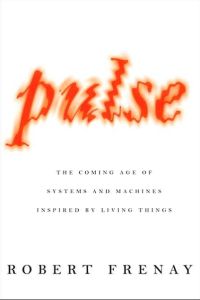Join getAbstract to access the summary!

Join getAbstract to access the summary!
Robert Frenay
Pulse
The Coming Age of Systems and Machines Inspired by Living Things
FSG, 2006
What's inside?
Industrial-age thinking is out; biotech is in. The body, and indeed all of life, is not a machine but an ecosystem.
Recommendation
This sprawling and fascinating book explores biology, technology, agriculture, neurology and economics, among other disciplines. It contends that systems and ways of thinking based on the machine age must and will change in light of new discoveries in biology. Robert Frenay provides prodigious research and some impressive reporting. One caveat: His discussion of economics and the monetary system seems to be based on somewhat arguable information about the workings of the Federal Reserve and the Eurodollar market. The author's passion for the subject of biology is clear, and getAbstract finds that much of what he says is interesting. The book is not so much a narrative as a catalogue of facts, experiments and initiatives in various fields, with an accompanying argument against today's corporations and monetary systems that will challenge executives and economists.
Summary
About the Author
Robert Frenay is a freelance writer living in New York. A former contributing editor for Audubon magazine, he covered developments in the interface of nature and technology.

















Comment on this summary